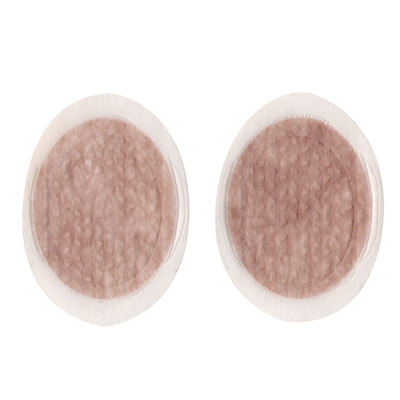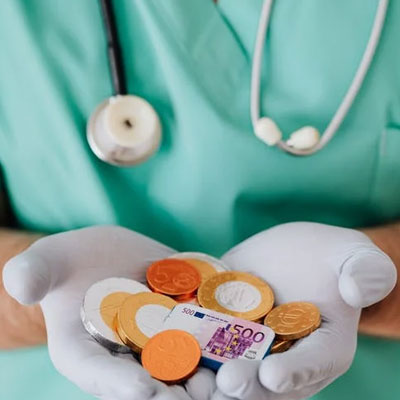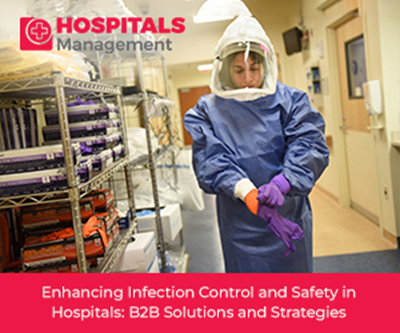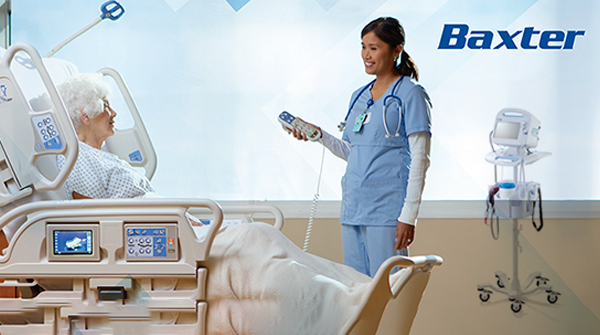Articles
Invention inspired by sneezing fits that nearly caused an accident to debut at MEDICAL FAIR ASIA 2016

Joseph Moore was inspired to invent something to protect himself from allergens when his own allergies almost killed him.
It wasn’t anaphylactic shock, just a severe sneezing attack while driving which almost resulted in his car being flattened by a huge semi-trailer truck.
Moore was inspired by the experience to invent something that might turn out to be a great benefit to many Asians living in cities occasionally besieged by haze or permanently smothered by traffic pollution.
After his frightening brush with the truck, Moore decided he needed something that could protect him from the allergens that caused his sneezing fits. He had tried various kinds of half-face surgical masks that most pharmacies carried but had found them uncomfortable and of only limited effectiveness as air always leaked around the edges. Nor were they practical for someone who was in and out of meetings all day. He had also tried different kinds of antihistamines but these also had drawbacks especially for someone who spent as much time driving and meeting people as he did.
Moore says, “As there did not seem to be a solution for me, I decided to develop one myself.”
Moorewas not from a medical background so he knew he would have to start from scratch. “I did a lot of research on allergies, types of allergens and different methods to reduce contact with, or reaction to, allergens, but one thing stood out for me. Most of us take in 90 percent of the air we breathe through our noses so if we could protect our noses we would instantly reduce our exposure to allergens by 90 percent.”
Once he understood this, Moorealso realised that there was no need to cover half one’s face and look like a bank robber in a western by wearing traditional surgical and allergy masks. In fact he could design something really discreet, almost invisible.
So that’s what he set out to do but first he had to do a lot more research, this time into materials. Along the way Moore was joined by three doctors from the University of Florida in the United States who heard about his project. As well as teaching him a great deal about respiratory and particle inhalation and allergies they also ended up joining the board of the company he founded to research and eventually manufacture his product, the Nasal Screens.
After some trial and error and experimenting with a variety of material Moore came up with a simple but brilliant solution. A self-adhesive screen made of 100 percent breathable, non-latex, hypoallergenic, skin safe material that covers the nostrils and prevents 98 percent of allergens and pollution from getting into the nose.
Moore was not the only one who thought he had a good idea. When he went on the American TV show Shark Tank looking for an infusion of cash to help him expand his production facilities, he started a bidding war among the panel of angel investors that ended with him being offered the largest cash investment in the show’s history; a cool US$4 million. However, as that was for 100 percent of his company he ended up turning it down.
He explains, “By that stage I already had a proven product. I had sold millions of units and orders for millions more, all I wanted from the sharks was capital to expand my manufacturing plant so I could meet all the orders I had coming in. So there was no way I was going to hand over my company for that amount of money.”
Moore eventually did make a deal with a couple of the sharks for the money he needed for expansion and has not looked back since. With his Nasal Screens now available across the United States, in much of Europe and also the Middle East— where they have proved effective against dust and sand as well as allergens — Moore is looking to introduce his products to Asia.
“I saw a news report about the problems with the haze from the burning of crop stubble and forestry in Southeast Asia and I thought my nasal screens could help those people. Then when I started to do some research about the region I realised that traffic pollution was also a major problem in many of the big cities such as Jakarta, Manila and Bangkok that my Nasal Screens can help with.SelectingMEDICAL FAIR ASIAas the place to introduce our product was a no-brainer, it is the biggest event of its kind in the middle of what I believe could be our biggest market. ”
Moore’s Nasal Screens are rated as being 92 percent effective against fine particles of 2.5 microns or less typically found in haze and vehicle exhaust pollution. They have been tested and found to be 77 percent effective on particles as small as 0.1 microns. The health authorities in Southeast Asian (SEA) countries affected by the haze problem in recent years recommend N95 masks which are rated as 99 percent effective against fine particles of 2.5 microns or less. However although the mask material is capable of stopping 99 percent of particles there is — as anyone who has ever worn one will know — there is always a chance of leakage around the edges of the mask even with those that give the best fit.
As Moore points out there is also the issue of comfort and compliance. “In Southeast Asia’s hot and humid climate wearing surgical face masks can be very uncomfortable so it is hardly surprising that the compliance rate for wearing them is only 30 percent. In other words seven out of 10 users will end up taking them off before they should because they are uncomfortable to wear. Our Nasal Screens have a 77 percent compliance rate as not only are they are easier and more comfortable to wear, one can still eat, drink and hold a normal conversation without taking them off.”
Moore’s filters, marketed as First Defence Nasal Shields, discreetly cover the nostrils and are affixed to the outer rim of each nostril by a self-adhesive strip. Although they can be rinsed and replaced if they come off during the day, each pair is meant for one day’s use only. They are self-cleaning as the act of breathing out clears the filters with each breath. They are available in three pack sizes supplying for one week, one month and three months respectively. The filters come in two sizes; the smaller of which is recommended for most Asians.
Moore says, “We hope to find a distributor or distributors at MEDICAL FAIR ASIA so that we can get First Defense Nasal Screens into pharmacies across the region by the first or second quarter of 2017.”
The Nasal Screens will be making theirdebut in Southeast Asia at MEDICAL FAIR ASIA 2016 (MFA 2016) which is happening from the 31st of August to the 2nd of September at Marina Bay Sands, Singapore.




